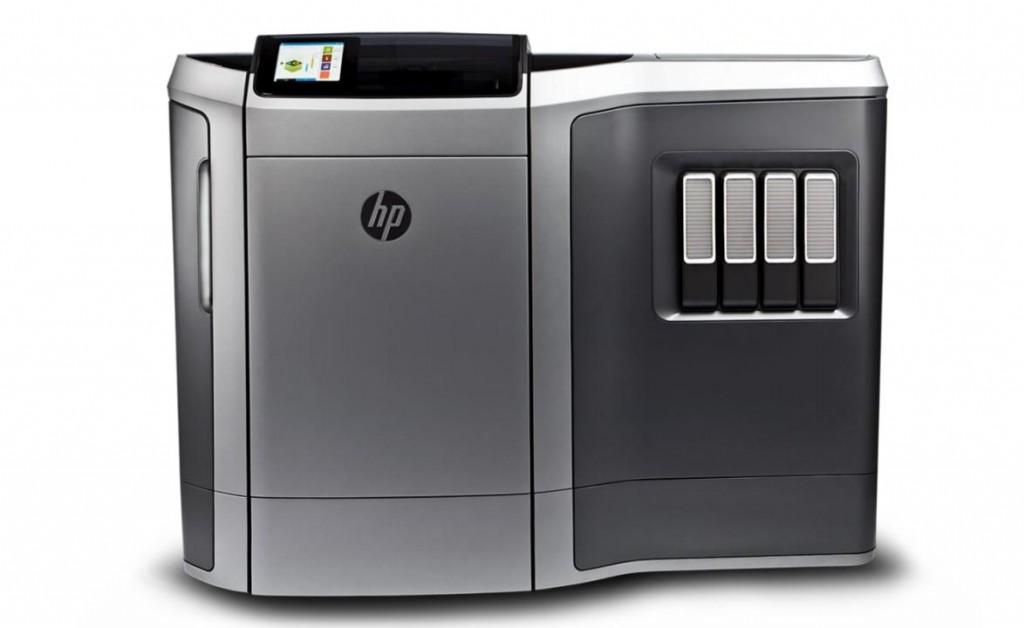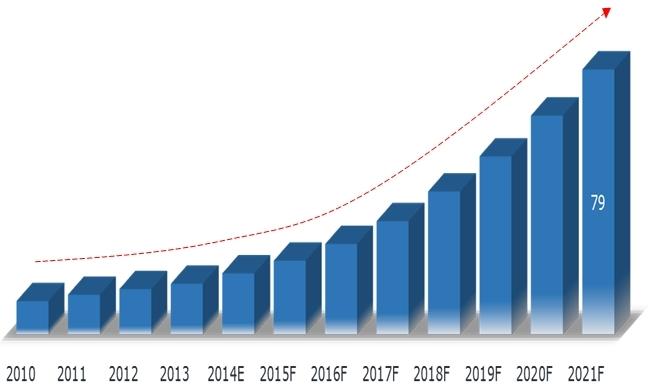 With last year’s stock implosion of 3D printing giants 3D Systems and Stratasys and their rapidly dwindling good will on the stock market, you would think that the 3D printing industry would be facing hard times. But reality couldn’t be any different, as 2016 looks to continue the upwards trend of 3D printer sales that has been in full swing for half a decade now. In fact, industry sales are trending upwards well into 2019, so it doesn’t seem to be the 3D printing industry that is the problem, it’s just two of the industry’s larger companies that seem to be struggling. Smaller 3D printer manufacturers are reporting record profits, and quickly becoming major players in the industry.
With last year’s stock implosion of 3D printing giants 3D Systems and Stratasys and their rapidly dwindling good will on the stock market, you would think that the 3D printing industry would be facing hard times. But reality couldn’t be any different, as 2016 looks to continue the upwards trend of 3D printer sales that has been in full swing for half a decade now. In fact, industry sales are trending upwards well into 2019, so it doesn’t seem to be the 3D printing industry that is the problem, it’s just two of the industry’s larger companies that seem to be struggling. Smaller 3D printer manufacturers are reporting record profits, and quickly becoming major players in the industry.
However, that doesn’t mean that there are no road bumps for 3D printing on the horizon. While desktop 3D printer sales are still growing, the end of the year did see them start to get a little soft. Although it is likely that this softening is just a natural slowdown as the market starts to redistribute itself. But still, with both 3D Systems and Stratasys both facing ever shrinking stock prices and resorting to major layoffs, this may not be the best time to invest in 3D printer manufacturers until it is clearer who will be the major players in the industry next year. With both HP Inc. and Canon moving into the 3D printer markets, it seems that things on the desktop and consumer levels will be in a state of flux for a while.
So if investing directly into 3D printer manufacturers isn’t the safest bet right now, what exactly is? Well, I believe that there are four key areas within the 3D printing industry that will be exploding in 2016, and they offer plenty of investment opportunities.
1.) Medical 3D Printing Applications
Using 3D printers for medical applications is already one of the fastest growing sectors within the industry and I see very little reason why that won’t continue into 2016 and beyond. 3D printed medical implants remain the strongest source of growth, as things like knee and joint replacements are becoming far more common. Additionally dental applications continue to expand, not only with companies that produce 3D printed invisible braces, but dentists are starting to use 3D scanning technology to produce more accurate measurements for dentures. They are even starting to 3D print the dentures themselves.
2.) Metal 3D Printing
If there was any one 3D printing application that was a clear winner this year then it was metal 3D printing. With the process being used for high profile projects like the SpaceX Falcon 9 rocket engine and major aerospace companies like Airbus, GE and Boeing making significant investments in metal 3D printing, the technology was on everyone’s radar. And as the process becomes more fully integrated into automotive and aerospace workflows, it is only going to be in more demand in the coming year. In fact, industrial uses for 3D printing in general are worth taking a greater look at as many of the newer prosumer machines are capable of producing high-quality, end-use products.
3.) 3D Printing Materials
At the moment there are perhaps a few hundred material options available that were developed specifically for 3D printing technologies. However, if you look at traditional manufacturing there are literally tens of thousands of material options available. As industrial uses for 3D printing continue to expand, the 3D printing materials market is on the cusp of exploding. While there are plenty of great material options for the hobbyist or desktop markets, when it comes to industrial applications there just aren’t enough options available. Product manufacturers already want 3D printing technology, so now it’s just up to material manufacturers to give them the same breadth of material options as other manufacturing processes have to offer. The big players are already working hard to expand their material options, and it is probable that 2016 will see that trend continuing.
4.) 3D Software
I’ll admit that this is a bit of a wildcard entry here, but the 3D printing industry has been pretending that it doesn’t need quality software solutions for years now. Previously, in order to take a 3D design from CAD software to a finished 3D printed part users would often have to employ three or four different programs, each of them working together about as well as a group of toddlers trying to build a house. But in 2015, major players like Autodesk and Dassault Systèmes have been adding important new functions to their CAD software packages that are rapidly making 3D printing a breeze. Design software like AutoCAD, 3ds Max and Solidworks have either incorporated features like 3D model repair, model slicing or 3D printing software directly into them, or added robust plug-ins or integration options with other software that offer virtually the same experience of using a single program. It is a pretty impressive turnaround in functionality that really only started to come together in the past year or so. The need for quality 3D software is only going to grow as the market of potential 3D printer users continues to grow.
 It is a pretty safe bet that all of these segments of the 3D printing industry will either grow dramatically, or at the very least remain solid in the coming year. They are all independent of any one specific 3D printer manufacturer, so they will remain untouched no matter who comes out on top in the printer market. They also have shown consistent and stable growth in the past few years, and they are processes, services or products that will always be in demand as long as there is a 3D printing industry. And finally all four of these segments of the industry are currently in hot demand and there doesn’t seem to be anything threatening to stymie that demand. Discuss these investment possibilities in the 3D Printing Investments 2016 forum on 3DPB.com
It is a pretty safe bet that all of these segments of the 3D printing industry will either grow dramatically, or at the very least remain solid in the coming year. They are all independent of any one specific 3D printer manufacturer, so they will remain untouched no matter who comes out on top in the printer market. They also have shown consistent and stable growth in the past few years, and they are processes, services or products that will always be in demand as long as there is a 3D printing industry. And finally all four of these segments of the industry are currently in hot demand and there doesn’t seem to be anything threatening to stymie that demand. Discuss these investment possibilities in the 3D Printing Investments 2016 forum on 3DPB.com
Subscribe to Our Email Newsletter
Stay up-to-date on all the latest news from the 3D printing industry and receive information and offers from third party vendors.
Print Services
Upload your 3D Models and get them printed quickly and efficiently.
You May Also Like
Consolidation in AM: How 2025 Is Shaping the Industry’s New Normal
The first half of 2025 has been marked by a clear shift in the additive manufacturing (AM) industry. Companies are no longer just focused on developing new tech by themselves....
Etsy Design Rule Change Reduces Selection of 3D Printed Goods
Online marketplace Etsy has implemented a rule change requiring all 3D printed goods on the site to be original designs. The update to the site’s Creativity Standards states, ¨Items produced using...
U.S. Congress Calls Out 3D Printing in Proposal for Commercial Reserve Manufacturing Network
Last week, the U.S. House of Representatives’ Appropriations Committee moved the FY 2026 defense bill forward to the House floor. Included in the legislation is a $131 million proposal for...
Transforming From Tourist to Native: Duro CEO Michael Corr Explains Why the Company Rebuilt its PLM Software on AI
In these early innings of the AI boom, many market analysts have expressed concern that AI spend has gotten too far ahead of the technology’s proven ability to deliver significant...
































